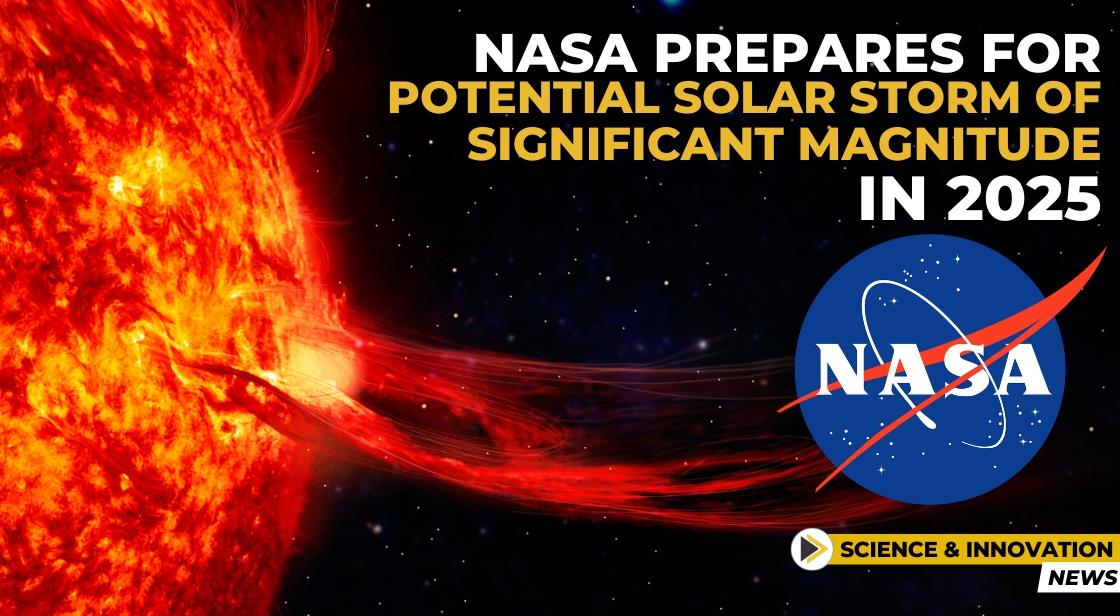NASA Prepares for Potential Solar Storm of Significant Magnitude in 2025

News Synopsis
It is predicted that solar storms will shortly climax. The fact that the Solar Peak is rapidly approaching makes it evident.
After Solar Cycle 24, which was relatively weak, Solar Cycle 25 is expected to be subdued as well, with a maximum sunspot number of 115 in July 2025,
According to a 2019 panel discussion by NOAA, NASA, and the International Space Environment Services (ISES). The highest sunspot number during Solar Cycle 24,
The weakest in a century, was just 116, far less than the average of 179. Though still weaker than normal, NOAA's most recent forecast points to a little better Solar Cycle 25.
A solar cycle, which is the periodic variation in the Sun's activity between the highest and lowest number of sunspots that have been observed—areas where the magnetic field is around 2,500 times stronger than Earth's—usually lasts 11 years.
The NOAA stated in a study that "The updated prediction now calls for Solar Cycle 25 to peak between January and October of 2024, with a maximum sunspot number between 137 and 173," despite some recent reports suggesting otherwise.
What effect does it have on the planet? Is NASA equipped to handle the impact? Understand every detail.
Highest Impact of the Solar Cycle on Earth
Around the middle of solar cycles, solar maximums can cause an increase in solar activity that can result in strong solar storms, flares, and coronal mass ejections (CMEs).
The potential for radio blackouts, induced currents in electrical systems, and large blackouts is there when these disruptions affect Earth's satellites, telecommunications, and power grids.
Solar storms can also interfere with communication, putting people and spacecraft in peril while in Earth's orbit.
Precautions must be made to protect critical systems and guarantee the security of both ground- and space-based activities during these times of high solar activity.
NASA's Solar Maximum Readiness
NASA presented a computer model in March 2023 that uses satellite data and Artificial intelligence (AI) to offer prior warnings for potentially dangerous space weather phenomena.
This ground-breaking technique provides an essential 30-minute heads-up by analyzing satellite solar wind measurements to forecast the location of imminent solar storms anyplace on Earth.
When it comes to reducing the catastrophic effects of solar storms on vital infrastructure, including power grids, this early warning system might be extremely helpful in enabling prompt preparations.
Two big geomagnetic storms that occurred in August 2011 and March 2015 were successfully predicted by the model, which was built by NASA's DAGGER (Deep Applied machine learning for Geospace Event Response) team.
DAGGER demonstrated its promise as an effective tool in protecting critical systems from the disruptive impacts of space weather events during testing by accurately and swiftly predicting the worldwide ramifications of these storms.
You May Like









